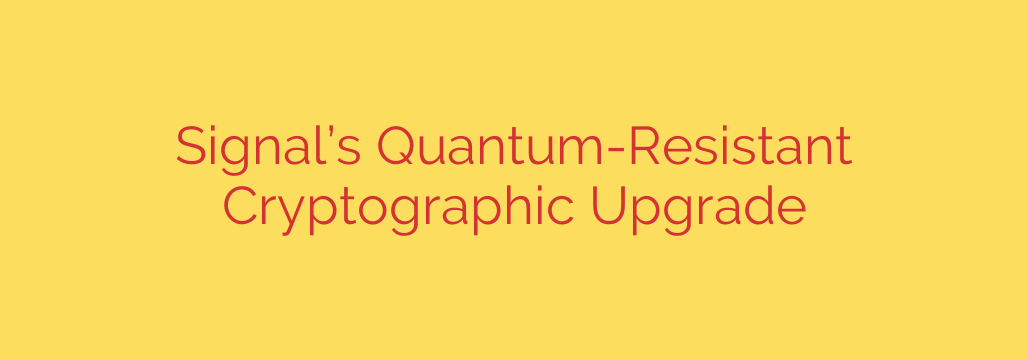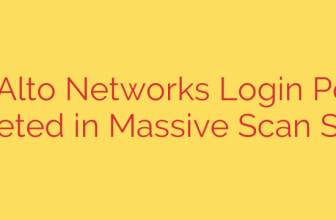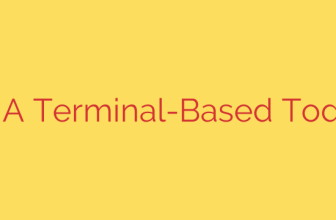
Signal Just Upgraded Your Security: Why Quantum-Resistant Encryption Matters for Your Privacy
In the world of digital privacy, secure messaging app Signal has long been a trusted leader. Now, it has taken another significant leap forward by upgrading its encryption protocol to protect user conversations from a powerful future threat: quantum computers. This proactive defense ensures that your private messages remain secure not just today, but for decades to come.
While the upgrade happens seamlessly in the background, its implications for your long-term privacy are profound. Let’s break down what this change means and why it’s a critical evolution in secure communication.
The Looming Threat: “Harvest Now, Decrypt Later”
Today’s encryption standards, used by everything from banking apps to messaging services, are incredibly strong against current computers. However, security experts are preparing for the arrival of quantum computers—powerful machines that could theoretically break many of the cryptographic systems we rely on.
This creates a serious vulnerability known as a “harvest now, decrypt later” attack. Malicious actors can intercept and store vast amounts of encrypted data today, betting that they will be able to decrypt it years from now once quantum computers become a reality. For sensitive communications—discussions with journalists, financial details, or personal conversations—the threat of future exposure is a significant concern.
Signal’s latest update directly confronts this danger, ensuring that messages sent today cannot be cracked by the supercomputers of tomorrow.
How Signal’s New Quantum-Resistant Encryption Works
To future-proof its platform, Signal has enhanced its already robust end-to-end encryption. The upgrade involves adding a layer of post-quantum cryptography (PQC) to its Signal Protocol.
Here are the key details of the upgrade:
- A Hybrid Approach: Signal isn’t replacing its current, battle-tested encryption. Instead, it’s adding a new, quantum-resistant layer on top of it. This means your communications are protected by both the existing cryptographic standard (known as X3DH) and the new quantum-resistant algorithm. This dual-layer approach provides the best of both worlds: the proven security of today’s standards and protection against the threats of the future.
- The CRYSTALS-Kyber Algorithm: The specific quantum-resistant algorithm being implemented is CRYSTALS-Kyber. This is a highly vetted and trusted method that was recently selected by the U.S. National Institute of Standards and Technology (NIST) as a standardized algorithm for post-quantum cryptography. By adopting a NIST-endorsed standard, Signal is building its security on a foundation of rigorous, public-facing academic and government review.
This upgrade is designed to be completely transparent to the user. You don’t need to flip a switch or change a setting; the protection is applied automatically as long as your app is up to date.
What This Upgrade Means for You
For the average Signal user, the immediate experience won’t change. Your chats will look and feel the same. However, the peace of mind this update provides is invaluable.
- Long-Term Data Protection: Your conversations are now protected against the “harvest now, decrypt later” threat, ensuring your privacy is preserved for the long term.
- Proactive Security: Signal is addressing a future threat before it becomes a widespread problem, demonstrating a strong commitment to user privacy and security leadership.
- No Action Needed: The upgrade is rolled out automatically. As long as you and your contacts are using the latest version of Signal, your conversations will be protected by this new cryptographic standard.
Your Next Steps: Simple Security Tips to Stay Protected
While Signal handles the complex cryptography, there are a few simple steps you can take to ensure your account remains as secure as possible.
- Keep Signal Updated: The most important step is to ensure your Signal app is always updated to the latest version. Automatic updates are the easiest way to receive the latest security features, including the new quantum-resistant encryption.
- Verify Your Safety Numbers: For highly sensitive conversations, take a moment to verify your safety number with your contact. This unique code ensures you are communicating with the right person and protects against man-in-the-middle attacks. You can do this by comparing the number in person, on a video call, or through another secure channel.
- Enable Registration Lock: Protect your account from unauthorized access by setting up a Registration Lock PIN. This prevents others from registering your phone number on a new device without your permission, adding a crucial layer of defense against SIM-swapping attacks.
By taking these proactive steps, you are not just securing your messages for today but safeguarding your digital privacy for a future we can only begin to imagine.
Source: https://www.bleepingcomputer.com/news/security/signal-adds-new-cryptographic-defense-against-quantum-attacks/








